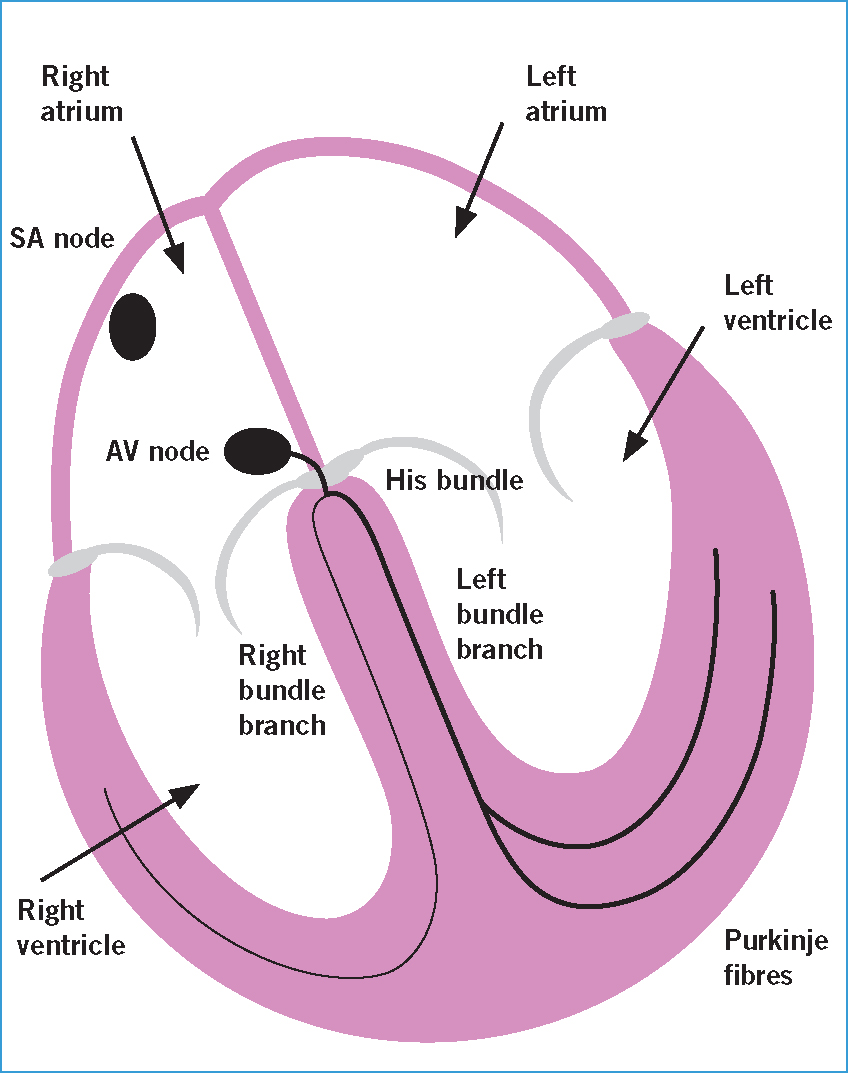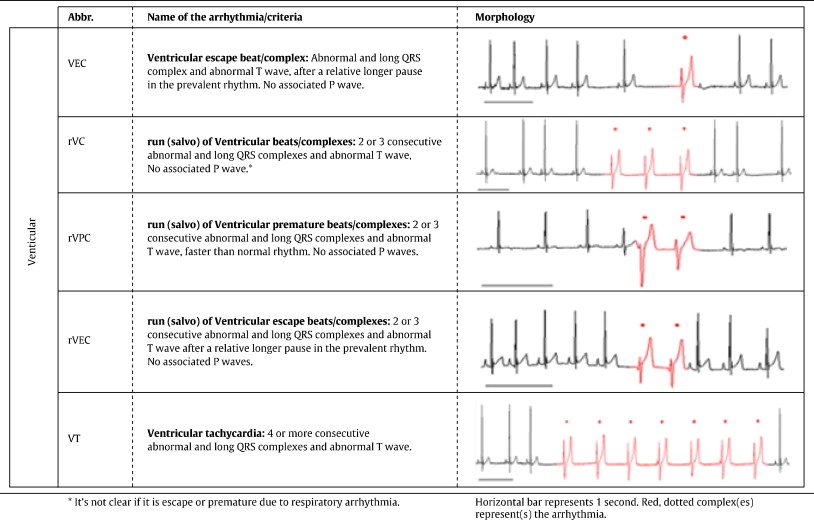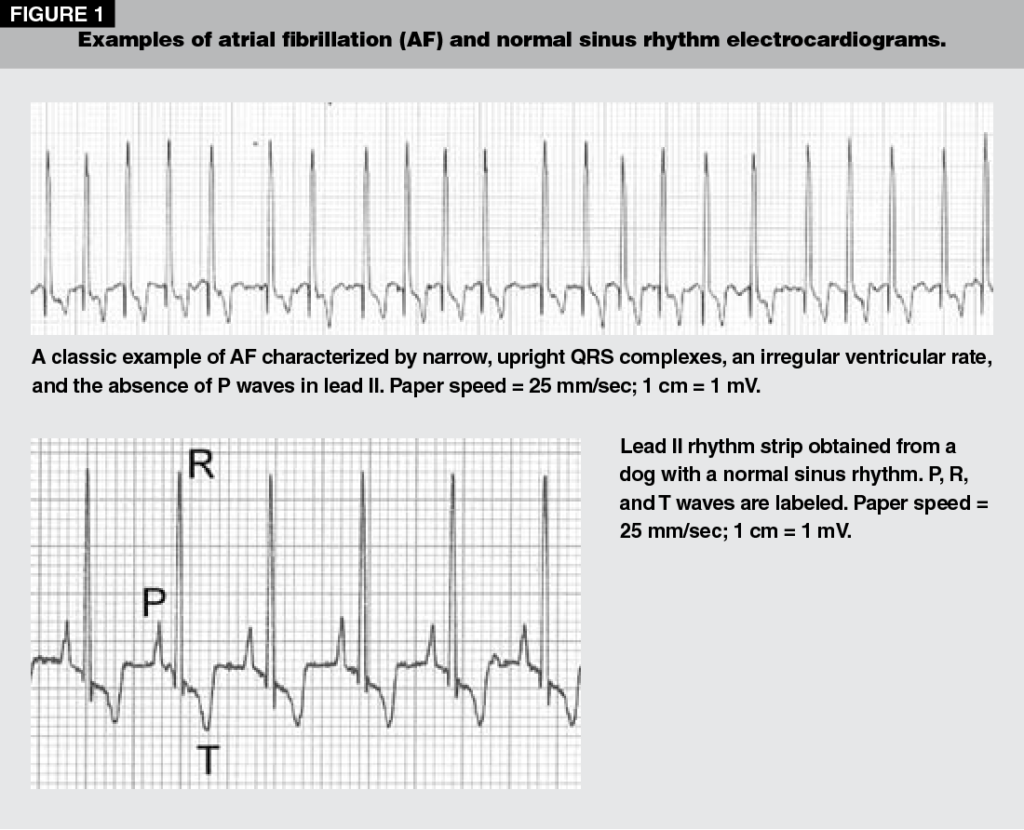Top 3 Arrhythmias in Dogs: Atrial Fibrillation, Ventricular Premature Complexes, and Ventricular Tachycardia

Top 3 Arrhythmias in Dogs: Atrial Fibrillation, Ventricular Premature Complexes, and Ventricular Tachycardia (NAVLE Notes)
Arrhythmias, particularly atrial fibrillation (A-fib), ventricular premature complexes (VPCs), and ventricular tachycardia (V-tach), can range from incidental findings to life-threatening conditions in dogs. Here’s an overview of each, along with diagnostic and treatment approaches.
Classic Case


- General Signs for All Arrhythmias:
- Exercise intolerance, syncope, weakness, pulse deficits.
- +/- Tachycardia and heart murmur.
- Atrial Fibrillation (A-fib):
- Lone A-fib: Seen in large and giant breeds like Great Dane, Newfoundland, and Irish Wolfhound; often asymptomatic with lower heart rates.
- Secondary A-fib: Occurs with atrial dilation due to underlying heart disease; usually has a faster heart rate and clinical signs are more evident.
- Ventricular Arrhythmias:
- Ventricular Premature Contractions (VPCs): May be asymptomatic or cause syncope.
- Ventricular Tachycardia (V-tach): Can result in syncope and sudden death.
Diagnosis
- Etiologies:
- A-fib Secondary to Atrial Dilation: Common in dogs with advanced endocardiosis or dilated cardiomyopathy, or in cats with advanced cardiomyopathy.
- Ventricular Arrhythmias: Can result from hypokalemia, hypomagnesemia, anemia, hypoxemia, cardiomyopathy, endocardiosis, endocarditis, myocarditis, pain, splenic or hepatic masses, trauma, or toxicosis (e.g., oleander, yew, foxglove).
- ECG Findings:
- A-fib: Rapid heart rate, absence of P waves, irregular R-R intervals.
- VPCs: Bizarre, wide QRS complexes with unrelated P waves; shorter R-R interval before VPCs; +/- negative QRS complexes.
- V-tach: Rapid and sustained heart rate (>180 bpm in dogs, >240 bpm in cats), with four or more VPCs in a row.
- Additional Diagnostics:
- Holter Monitor: 24-hour ECG to assess arrhythmia severity and average heart rate.
- Echocardiography: To check for underlying cardiomyopathy.
- Abdominal Imaging: To investigate organic diseases or masses that may cause arrhythmias.
- CBC and Chemistry Panel: To assess for anemia and electrolyte disturbances.
- Thoracic Radiographs: To check for cardiomegaly or pulmonary disease.
Treatment
- Atrial Fibrillation (A-fib):
- Lone A-fib: Generally does not require treatment if the heart rate is <150 bpm.
- If Heart Rate >150 bpm or signs of right heart failure:
- Amiodarone: For cardioversion.
- Digoxin: To slow AV nodal conduction.
- Diltiazem: Calcium channel blocker.
- Ventricular Arrhythmias:
- VPCs: May not require treatment unless sustained heart rate >180 bpm in large dogs, >220 in small dogs, or >260 in cats. Also treated if R on T phenomenon, complex patterns (triplets, couplets, bigeminy, trigeminy), or clinical signs are present.
- Sotalol: β-blocker, commonly used.
- Mexilitine: Oral lidocaine analogue, rarely used as monotherapy.
- V-tach:
- Emergency: Lidocaine bolus followed by CRI.
- Long-term Management: Sotalol, mexilitine.
Key Points
- Prognosis:
- A-fib:
- Lone A-fib: Prognosis is fair to good.
- Secondary A-fib: Guarded to poor long-term, especially in non-giant breed dogs, indicating significant underlying heart disease.
- Ventricular Arrhythmias:
- VPCs: Solitary VPCs may be incidental, but prognosis worsens with increased frequency and complexity, often depending on the underlying cause.
- V-tach: Prognosis is poor to grave, with a risk of ventricular fibrillation and death if uncontrolled.
NAVLE-Style Practice Questions on Arrhythmias
Question 1
A 6-year-old Great Dane is diagnosed with atrial fibrillation but shows no clinical signs, and its heart rate is 120 bpm. What is the most appropriate treatment?
- A) Amiodarone
- B) Digoxin
- C) No treatment required at this time
- D) Lidocaine
Correct Answer: C
Explanation: Lone A-fib in large breeds with a heart rate <150 bpm does not typically require treatment unless clinical signs or a faster heart rate develop.
Question 2
A 4-year-old Boxer presents with exercise intolerance, weakness, and an ECG showing occasional wide, bizarre QRS complexes. What is the most likely diagnosis?
- A) Ventricular premature contractions (VPCs)
- B) Atrial fibrillation
- C) Complete heart block
- D) Sinus arrhythmia
Correct Answer: A
Explanation: VPCs are characterized by wide, bizarre QRS complexes on ECG and can cause symptoms like weakness and exercise intolerance, which are seen in this case.
Question 3
A 7-year-old Labrador is brought in after a syncopal episode. ECG shows a rapid run of VPCs at a sustained heart rate of 200 bpm. What is the best emergency treatment?
- A) Amiodarone
- B) Digoxin
- C) Lidocaine bolus and CRI
- D) Furosemide
Correct Answer: C
Explanation: Lidocaine is the treatment of choice for emergency management of V-tach, especially in cases with a rapid and sustained ventricular rate, such as this one.
For study notes visit cracknavle.com